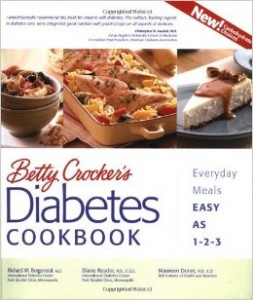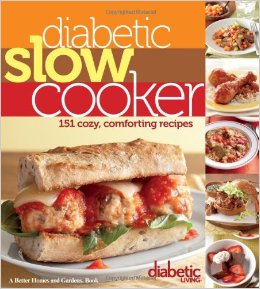Food, insulin, and blood glucose levels are intricately intertwined in the body. But you don’t have to be a rocket scientist to know that healthy foods will benefit any individual living with diabetes.
Which foods are healthiest for diabetics? How can you make diabetic-friendly meals and stay within your budget? Look to these five diabetic cookbooks to find a wealth of information on diabetes and the recipes you need to keep your blood sugar under control.
The Glycemic-Load Diet: A Powerful New Program for Losing Weight and Reversing Insulin Resistance
Author: Dr. Rob Thompson 
If you’re a diabetic, you’ve probably heard about the glycemic index. Essentially, every food with carbohydrates is assigned a number based on how much it raises blood glucose levels. In general, foods with lower numbers are healthier than food with higher numbers. However, as Dr. Rob Thompson points out in this book, there are some flaws in this methodology.
Dr. Thompson uses his book to explain a new concept: glycemic load. He outlines the importance of serving sizes and details how diabetics can use the principles of glycemic load to lose weight. His recipes promote eating whole foods that are quality sources of nutrition: meats, cheeses, vegetables, fruits, and the like.
Betty Crocker’s Diabetes Cookbook: Everyday Meals, Easy as 1-2-3
Authors: Dr. Richard M. Bergenstal, Diane Reader, and Maureen Doran
Coming from the queen bee of cookbooks, this one contains 140 recipes and includes the nutritional breakdown of every dish. The editors have even created a seven-day meal plan using recipes from the cookbook. The recipes are divided into eight sections, featuring everything from breakfast to dessert.
This cookbook also serves as an educational tool. The beginning pages outline the main aspects of diabetes and provide a Q & A page with answers from a dietician. There is also a helpful carbohydrate chart and a glossary of commonly used diabetic terms.
The Blood Sugar Solution Cookbook: More than 175 Ultra-Tasty Recipes for Total Health and Weight Loss
Author: Dr. Mark Hyman
Dr. Mark Hyman is physician and well-respected author who has had seven books hit the #1-spot on the New York Times best sellers list. He’s a strong advocate of functional medicine—a patient-centered, whole-body treatment approach that focuses on the underlying causes of diseases.
In this cookbook, Dr. Hyman focuses on using proper nutrition to reverse diabetes and obesity. Before he lists any recipes, he encourages readers to take a series of quizzes to gauge the severity of their condition. He also provides guidelines for stocking the kitchen and shopping at the grocery store.
Finally, on to the recipes! Dr. Hyman doesn’t use any convenience foods, but instead focuses on a variety of real foods. These recipes are far from traditional “meat and potatoes” meals and many of the recipes take dedicated preparation, but the results are well worth it.
Biggest Book of Diabetic Recipes: More than 350 Great-Tasting Recipes for Living Well with Diabetes
Author: Better Homes & Gardens Editors 
This diabetic cookbook is easy, straightforward, and a great option for beginners. The recipes utilize ingredients that are easy to find at any grocery store. Plus, they feature just the right spices to bring out the natural flavoring of foods without unnecessary added salt, sugar, or fat.
Unlike hardcover or paperback cookbooks, this collection of recipes is put together in a plastic spiral binding that allows the pages to lay flat on the countertop while you cook. Plus, it includes several days of meal plans and seven categories of recipes.
Diabetic Slow Cooker
Author: Diabetic Living Editors 
Everyone loves slow cooker meals! They’re a cinch to prepare and the low-and-slow cooking time gives the food a great flavor. This cookbook from Diabetic Living gives diabetics quick tips on how to makeover traditional slow cooker meals and turn them into diabetic-friendly dishes.
There are 150 recipes in this book. You’ll find healthy recipes for chicken wings, meatballs, sandwiches, desserts, and much more. Plus, each recipe page also includes suggested side dishes and nutritional content.


